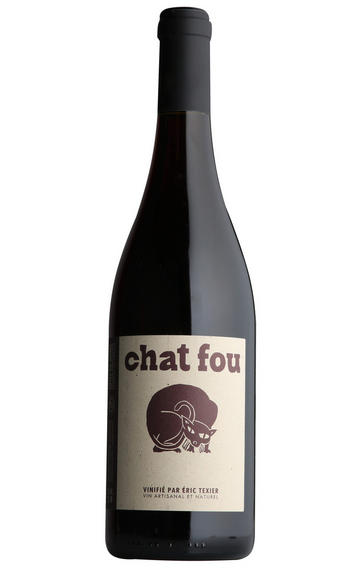
2021 Eric Texier, Chat Fou, Vin de France
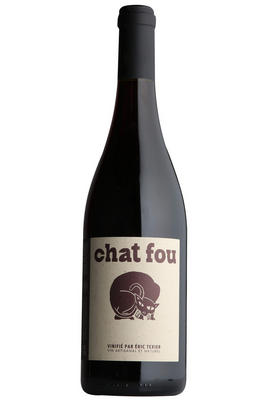
Critics reviews
50% Grenache, 30% Cinsault, 20% Clairette, a ‘fair bit’ from old vines. We’re told officials considered it too light in colour to maintain its Côtes du Rhône status. So, from the 2021, Eric Texier has made it as a Vin de France. Texier says he wants to make a wine like one you would find in Beaujolais – ‘something fresh that you can put in the fridge’—certified organic.
Transparent garnet. Full of life! It’s easy to see the slightly anarchic element here. It is wine-bar wine rather than serious salon wine, but it is very well done.
Drink 2022 - 2024
Jancis Robinson MW, JancisRobinson.com (September 2023)
About this WINE
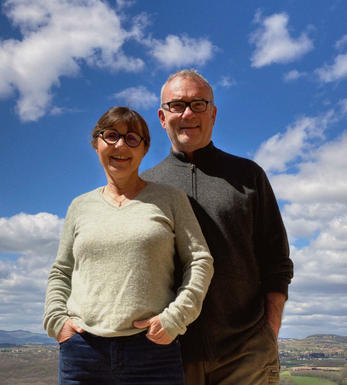
Eric Texier
Eric Texier made the unprecedented leap from nuclear engineer to winemaker in the early 1990s. Although his passion for wine was begat from the wines of Burgundy, he was inspired by an older generation of Rhône producers like Marius Gentaz and Pouchoulin, and felt that a successor was needed. Drawing on their methods of only using natural yeasts and leaving the bunches intact, he developed some of his own ideas and techniques as well. The grapes are grown organically (although the labels don’t state this). Maturation is carried out in old demi-muids and sulphur dioxide is never used during vinification, only at bottling. All of these methods, he feels, serve to express the special terroir of these appellations.
And what of the terroirs? Brézème is a tale of two soils, divided by a valley. One, which Eric refers to as the “vrai Côte de Brézème” and likens to Hermitage, is made up of marnes calcaires while the other is more alluvial with galets ronds. There is a unique microclimate here, 300 metres above sea-level with a cooling influence from the Vercors Massif to the east. Some vineyards are classified as Brézème and others not in a seemingly haphazard fashion; the only element that Eric can find in common for the classified vineyards is that they are easier to work. Texier’s wines come from 4.2ha here, producing approximately 20,000 bottles (slightly more than St Julien, of which there were 16,000 bottles produced in 2010). St Julien is, curiously, much hotter than Brézème though it is just across the Rhône and 200 metres higher. Eric’s Syrah and Roussanne vines are the original local varieties and not clones, which is why the old-vine red and white cuvées are called “Serine” and “Roussette” respectively.
He is the only organic producer both in Brézème and St Julien, and could be seen as a pioneer of both appellations which, while today being just humble Côtes du Rhône, are expected very shortly to have their own appellations.
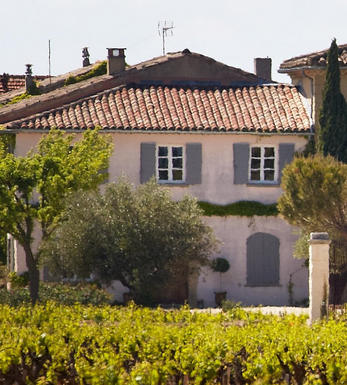
Vin de France
Vin de France is a wine classification in France that was introduced in 2010 to replace the former Vin de Table category. It represents a more flexible and modern approach to French wine production, offering winemakers greater freedom in terms of grape sourcing, blending, and winemaking techniques.
Unlike wines with controlled appellations such as AOC Alsace or Vin de Pays, which are tied to specific regions within France, Vin de France wines can be sourced from grapes grown anywhere in the country. This gives winemakers the freedom to experiment with grapes from different regions, allowing for greater creativity and innovation.
Winemakers can blend grape varieties from different regions or even different countries to create unique flavour profiles. This flexibility enables the production of a wide range of wine styles, from traditional varietal wines to innovative blends.
While Vin de France wines offer greater flexibility in production, they still must adhere to certain labelling requirements. The label must include the designation "Vin de France," along with the producer's name and the volume of alcohol. Additional information such as grape variety, vintage, and specific geographical origin may also be included on the label.
Vin de France wines may not have the prestige or strict regulations of wines from controlled appellations. However, they can still offer excellent quality and value. Many producers use Vin de France as a platform for experimentation and innovation, resulting in a diverse range of wines that cater to various tastes and preferences.
Vin de France wines are often positioned as versatile, everyday wines that are accessible and easy to understand. They can offer a good balance between quality and affordability, making them popular choices for everyday consumption.
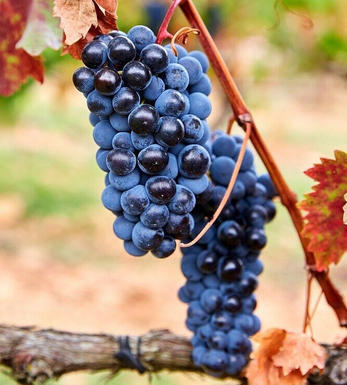
Southern Rhône Blend
The vast majority of wines from the Southern Rhône are blends. There are 5 main black varieties, although others are used and the most famous wine of the region, Châteauneuf du Pape, can be made from as many as 13 different varieties. Grenache is the most important grape in the southern Rhône - it contributes alcohol, warmth and gentle juicy fruit and is an ideal base wine in the blend. Plantings of Syrah in the southern Rhône have risen dramatically in the last decade and it is an increasingly important component in blends. It rarely attains the heights that it does in the North but adds colour, backbone, tannins and soft ripe fruit to the blend.
The much-maligned Carignan has been on the retreat recently but is still included in many blends - the best old vines can add colour, body and spicy fruits. Cinsault is also backtracking but, if yields are restricted, can produce moderately well-coloured wines adding pleasant-light fruit to red and rosé blends. Finally, Mourvèdre, a grape from Bandol on the Mediterranean coast, has recently become an increasingly significant component of Southern Rhône blends - it often struggles to ripen fully but can add acidity, ripe spicy berry fruits and hints of tobacco to blends.


Buying options
Add to wishlist
Description
This gorgeous blend of 50% Grenache, 30% Cinsault and 20% Clairette was considered by officials to be too light in colour to maintain its Côtes du Rhône status. So from the 2021, Eric Texier has made it as a Vin de France. Don’t be fooled into think this means inferior quality, however: this is 100% organic fruit, a fair bit from old vines, with hands-off winemaking and low sulphur to allow the fruit to shine through.
The 2021 has a fine strawberry nose followed by a refreshingly light-bodied palate. Flavours of strawberries and raspberries continue with wonderful purity, and all feels perfectly balanced with fine, powdery tannins. The fruit lingers along with a delicious savoury note on the finish. Eric says he wants to make a wine like one you would find in Beaujolais – “something fresh that you can put in the fridge”. He has absolutely achieved that here.
Drink 2023 - 2025
Catriona Felstead MW, Senior Buyer, Berry Bros. & Rudd
wine at a glance
Delivery and quality guarantee